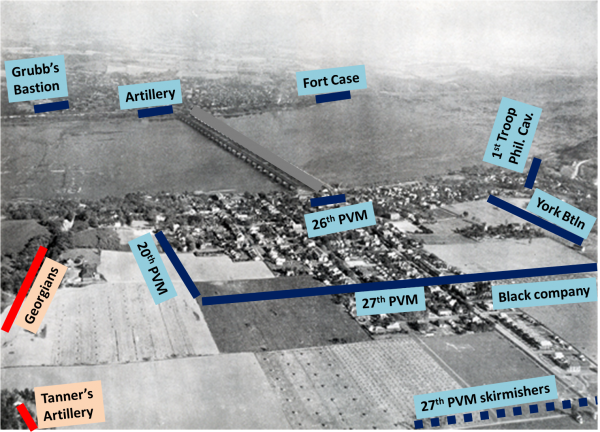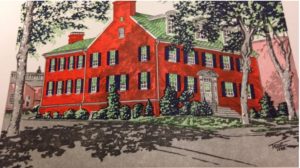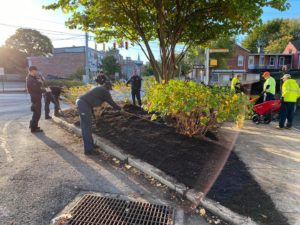Marker honors Susquehanna bridge defender
Mount Pisgah Cemetery
Rear Mulberry and South Second Street
Wrightsville
The situation
In this quiet hillside cemetery near Wrightsville rests the bodies of African Americans and Native Americans. A prominent marker in this cemetery, founded in 1855, is dedicated to a black volunteer who died in defending the Columbia-Wrightsville Bridge in late June 1863. He died fighting a Confederate brigade intent on capturing the mile-long bridge – the same invading force that John Aquilla Wilson battled. The marker adds: “And to all black veterans that honorably served in the armed forces.” This monument was erected in 2014, after the York-based Social Friendship Lodge No. 42 Prince Hall, Free and Accepted Masons, an African-American lodge took, up the project. It received aid from the Masonic Lodge near North York and others in the community. For years, a marker honoring a Confederate soldier north of Wrightsville has been in place, and in fact, replaced in the past 10 years with great ceremony when it was washed away by high water. This placement of a marker commemorating the black fighting man’s defense of the bridge came about when this inequity was made public.

The witness
The Black man who fought is believed to have come across the Susquehanna River from Columbia, a part of a team recruited to dig trenches to better defend the bridge. As the Confederates approached, he laid down his entrenchment tools and shouldered a rifle. He was killed by a cannonball, one of about 50 the Confederates lobbed at the bridge and town of Wrightsville. His identity is unknown, and it is unknown where he is buried. But this Mount Pisgah Cemetery marker ensures his bravery is remembered.
The questions
- Deciding where a monument goes is important. To commemorate a Black man who died defending the Wrightsville bridge, a cemetery was understandably chosen. What does a monument’s location say about the way we honor and remember people and events? Where is another place we could have put the monument? (Interestingly, in 2018, the cemetery’s operators were concerned about funding ongoing maintenance.)
- We don’t know much about the man who was killed by the cannonball, defending the bridge. We don’t know his name, his age, or where he grew up. We may not be able to identify him, but we know his actions. How does the way we document people and places impact the connection people feel years down the road? What obligation do we have as York County residents to document specifics now so future generations can understand what we did today?
Sources and links: Facebook page; Honoring a Civil War hero: Making things right in Wrightsville; York Daily Record photo, top.
— By JAMIE KINSLEY and JIM McCLURE




Pingback: Unsung York County Civil War sites to visit - Witnessing York